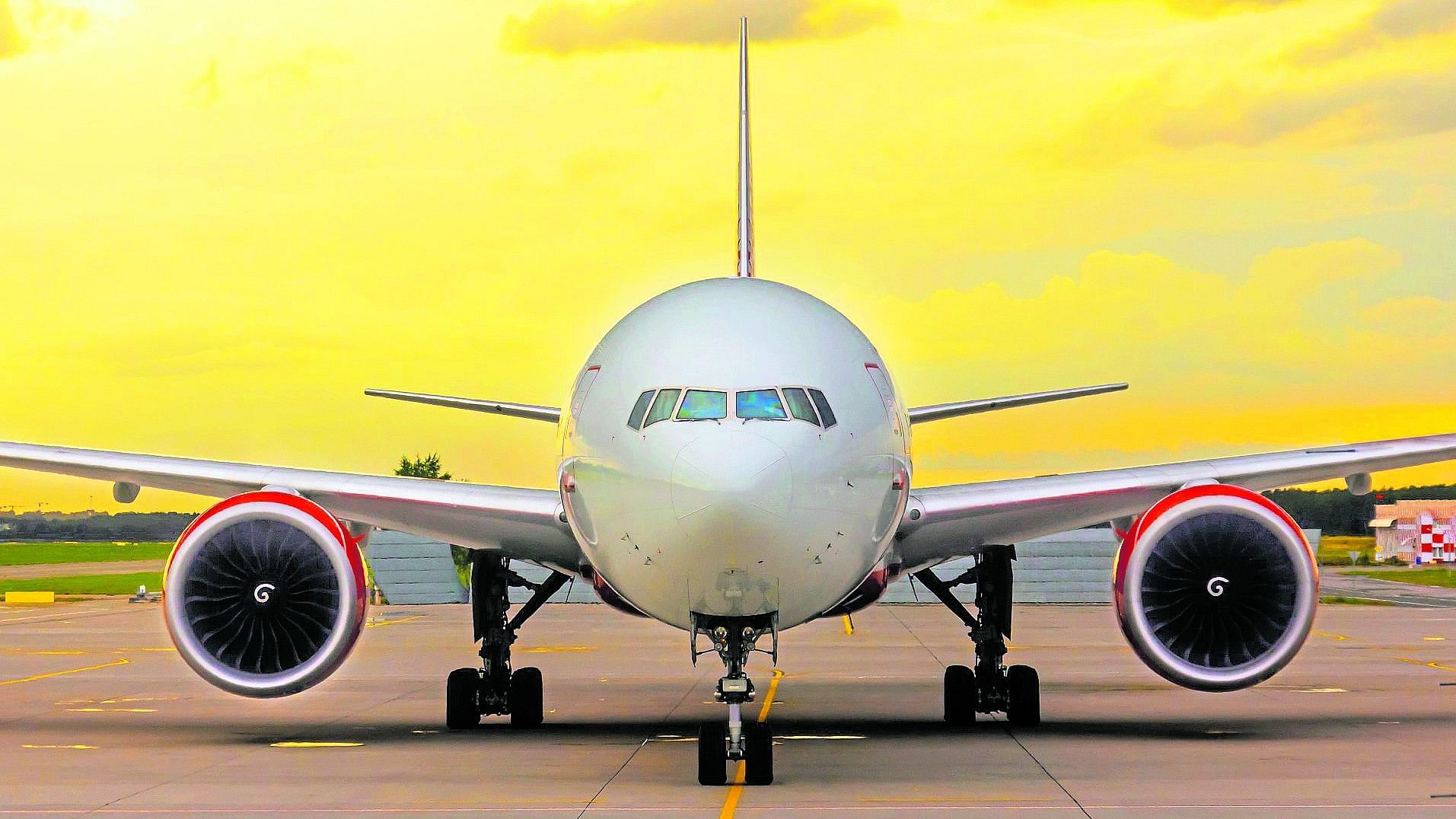
ICRA has however estimated that the share of grounded aircraft will only rise by March 2024 to 22-24 per cent.
Credit: iStock Photo
Bengaluru: Some muting of the elevated aviation turbine fuel (ATF) costs, the pricing discipline maintained as the industry consolidated operations with aircraft groundings, is expected to help the Indian aviation industry bring down its net losses to Rs 3,000-5,000 crore in the current financial year from estimated Rs 17,000-17,500 crore losses it clocked in FY23, Investment Information and Credit Rating Agency (ICRA) said on Tuesday.
Going forward, the industry will see a revenue growth of 15-20 per cent and 10-15 per cent in FY24 and FY25, respectively. “The air passenger traffic momentum witnessed in the current fiscal is expected to continue in FY2025, though further expansion in yields from the current levels may be limited. Thus, the industry is estimated to report a similar net loss of ~Rs 3,000-5,000 crore in FY2025 as well,” said Suprio Banerjee, Vice President and Sector Head – Corporate Ratings, ICRA Limited.
Source: ICRA
ATF, which accounts for 30-40 per cent of any airline’s costs, muted to Rs 1,03,189 a kilolitre (KL) in the nine months of FY24, as compared to the high of Rs 1,21,013/KL it touched in FY23. Though reigning 59% above the FY20 average price level of Rs 64,715/KL, the mild taming has clearly made a difference.
Meanwhile, passenger traffic that already rebounded in FY23 is expected to grow by another 8-13 per cent in the current financial year. In October FY24, Indian carriers reported ~28.2 per cent year-on-year (YoY) growth in international passenger traffic, which is ~25.4 per cent over pre-Covid levels (7M FY2020). With 20-22 per cent of the domestic aircraft grounded, a supply-demand gap was seen pushing up the prices, though ICRA insisted that the price rise in India was more rationalised than the global scene.
"Earlier due to high competition, Indian airlines were not increasing fares proportionately to the increase in costs. Now with consolidation in the industry, the airlines have got pricing power - also supported by the strong demand," explained Kinjal Shah, Vice President and Co-Group Head - Corporate Ratings, ICRA Limited.
But the industry’s challenges are far from over. ICRA estimates that the share of grounded aircraft will only rise by March 2024 to 22-24 per cent. “This will result in high operating expenses towards the cost of grounding, increase in lease rentals due to additional aircraft being taken on lease to offset the grounded capacity, along with increasing lease rates and lower fuel efficiency, which adversely impact the airline’s cost structure, and thus overall cash flow generation,” Banerjee suggested.
While the industry expects to double its fleet by FY30, ICRA sees this happening at a gradual pace given the supply chain issues evident with aircraft original equipment manufacturers. Then, it contends that most of these buys will essentially replace old aircraft moving towards better fuel efficiency. The additions to the fleet are also slated for expanded international operations. So the demand-supply balance can be maintained only in the medium term, it surmised.